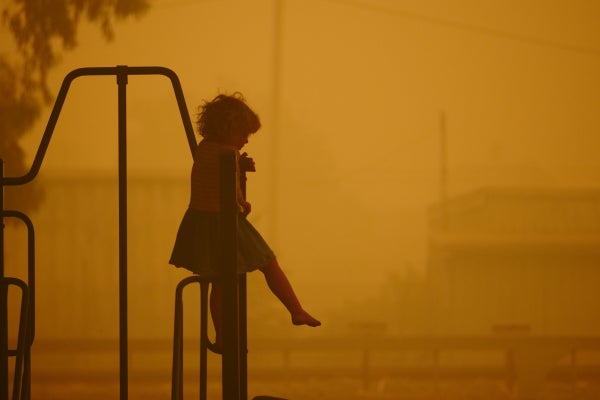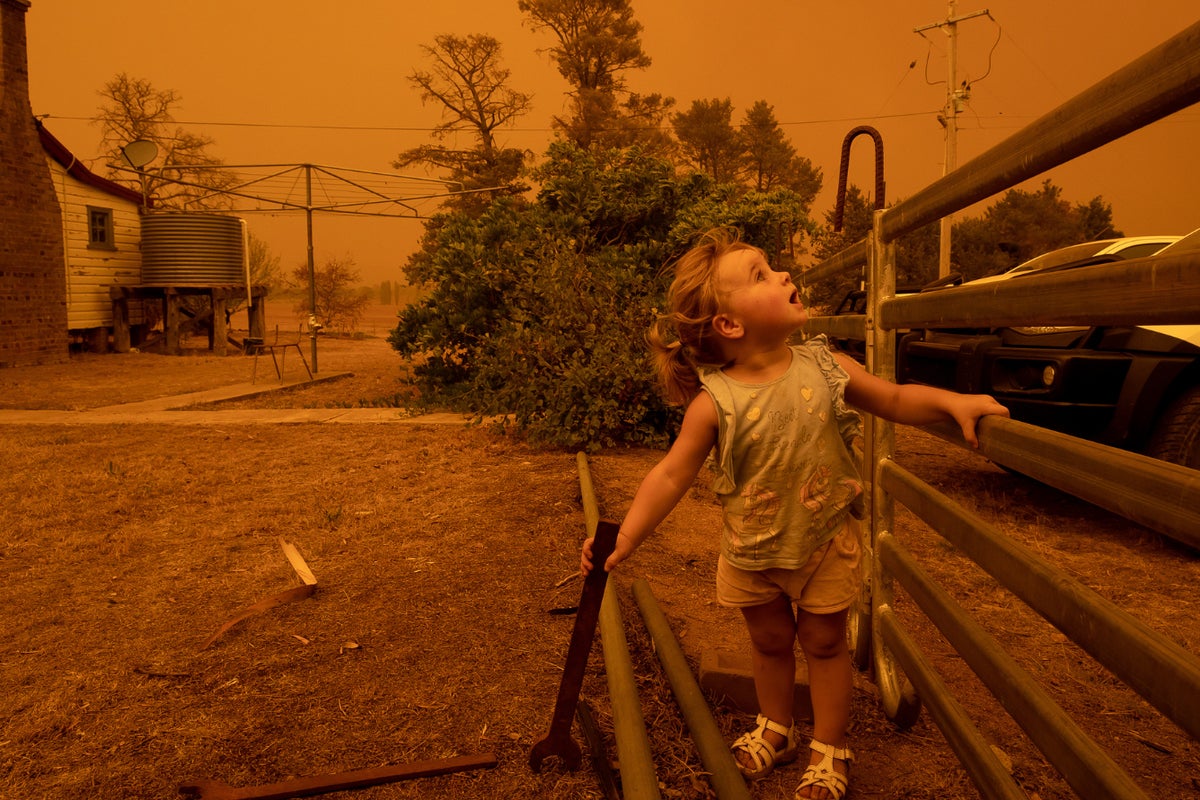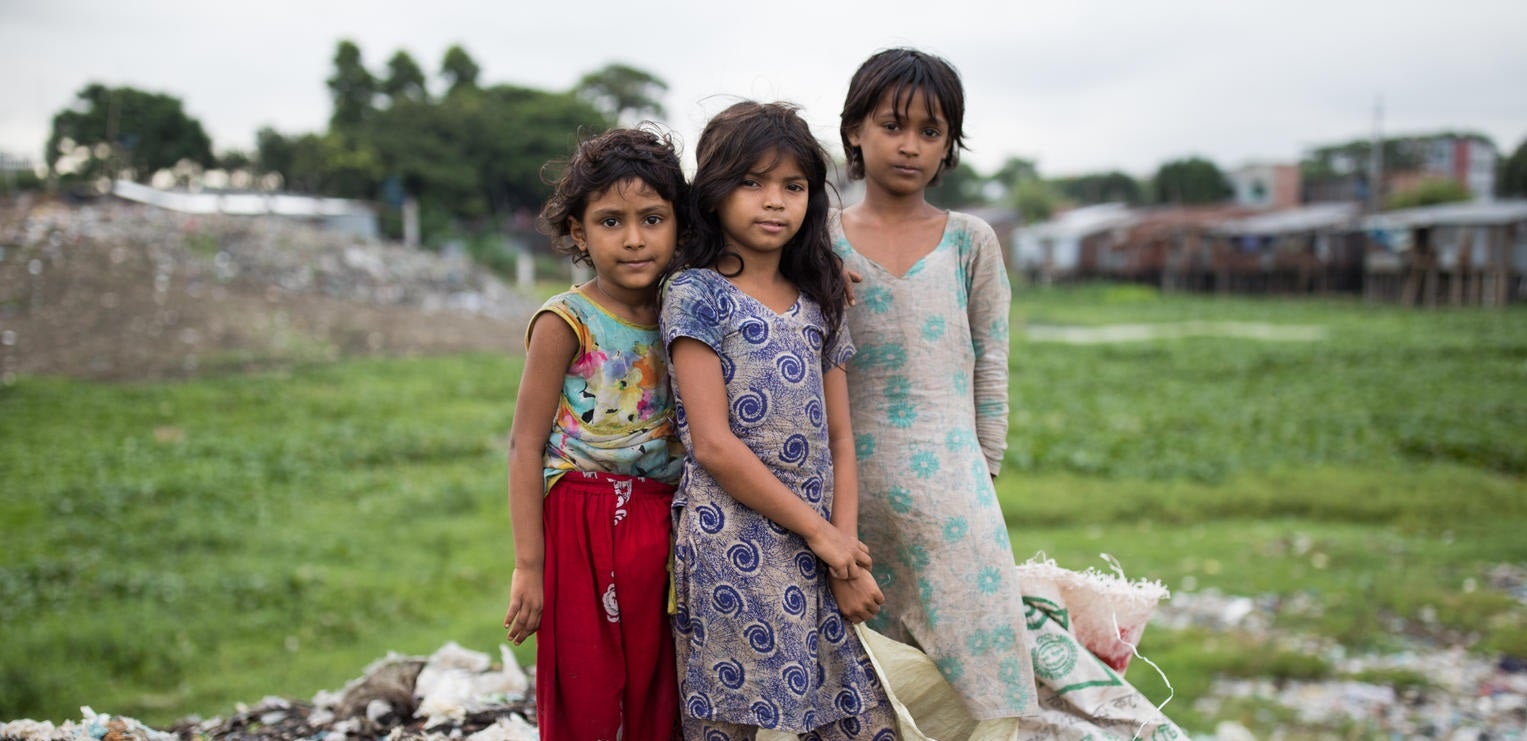In Australia and around the world, children and young people are bearing the brunt of the climate crisis as their homes, communities and lives are being uprooted by more frequent and intense disasters, from devastating bushfires to catastrophic floods.
In one of the first analyses of its kind, the report by Deloitte Access Economics for UNICEF Australia looked at the cost of the impact of climate disasters on children and young people in Australia. It found more than 1.4 million children and young people experience a climate disaster or extreme weather event in an average year in Australia, with those in remote areas, from lower socio-economic backgrounds, and Indigenous children more likely to be impacted. That is equivalent to one in six children, and sadly, that number is on the rise.
1.4 million
children and young people experience a climate disaster every year in Australia
$3.1 billion
is the cost of the impacts of climate disasters on Australian children and young people in an average year
The analysis found that experiencing a disaster made affected children and young people less likely to finish year 12, more likely to experience psychological distress, and more likely to experience homelessness. According to the data available, the cost of the impacts of disasters and extreme weather events for children and young people is estimated to be $3.1 billion in an average year, and up to $6.2 billion in a high disaster year.
These disasters are changing childhood as we know it. Here are three ways the climate crisis is impacting children and young people in Australia.
1. Educational outcomes are dropping for children impacted by disasters

A quality education can set a child up for life, but the Deloitte analysis estimates that young people who experience a disaster in Australia are 4.2 per cent less likely to complete high school than those who do not. In an average year, that's equivalent to roughly 28,200 fewer children not completing school due to their exposure to disasters. This is leading to poorer educational and financial outcomes for children and young people.
The report found several factors that make children and young people more susceptible to poorer education outcomes following life-changing climate events. They include disruption to school attendance during and immediately after disasters due to the destruction of homes and schools, as well as parental financial stress which can also lead to children skipping classes or dropping out altogether.
2. Children are struggling with their mental wellbeing long after a disaster ends
The trauma of living through a climate disaster in childhood can last a lifetime, and the Deloitte analysis found children and young people who have experienced a disaster are up to 4.5% more likely to experience symptoms of psychological distress compared to those who have not. Particularly during a disaster and the following year, those children experienced higher levels of stress, panic disorder, anxiety, depression, post-traumatic stress disorder, and adjustment disorder.
3. More children are losing their homes and communities

No child should ever experience homelessness, but sadly, that is the case for a growing number of Australian children and families whose homes or entire communities have been damaged or destroyed in climate disasters and extreme weather events.
According to the Deloitte analysis, Australian children and young people who are exposed to climate disasters were found to be 2.9% more likely to experience short-term homelessness or temporary displacement compared to children who were not. That is equivalent to 170 additional children and young people becoming homeless in an average year.
How UNICEF is supporting children and families affected by climate change

In Australia and around the world, UNICEF is working to protect children from the effects of climate change while helping communities build towards a more sustainable future.
But without immediate, meaningful, and long-term climate action from the world’s decisionmakers, children will continue to bear the brunt of the worsening climate crisis. We need to treat climate change like the crisis it is and act with the urgency required to ensure our children inherit a liveable planet.
"It is evident Australia must prepare, protect and prioritise children and young people and their communities for climate related disasters, which will only become more severe and frequent in the future."
That is why UNICEF Australia is calling for:
- Increased investment in data and research to provide a full picture of immediate and longer-term trends and help ensure vulnerable communities can be more resilient to future disasters.
- The Federal Government’s national climate risk assessment, which is currently in development, will model possible scenarios to reduce disaster risks. UNICEF Australia wants to see children and young people’s needs carefully considered when assessments are taking place.
- A national approach to supporting children and young people in the aftermath of a disaster. When funding decisions are being made for disaster recovery programs, the specific needs of children and young people must be considered.
Climate change is changing childhood. But together, we can create a brighter future for children in Australia and around the world.
Related articles
Stay up-to-date on UNICEF's work in Australia and around the world


















